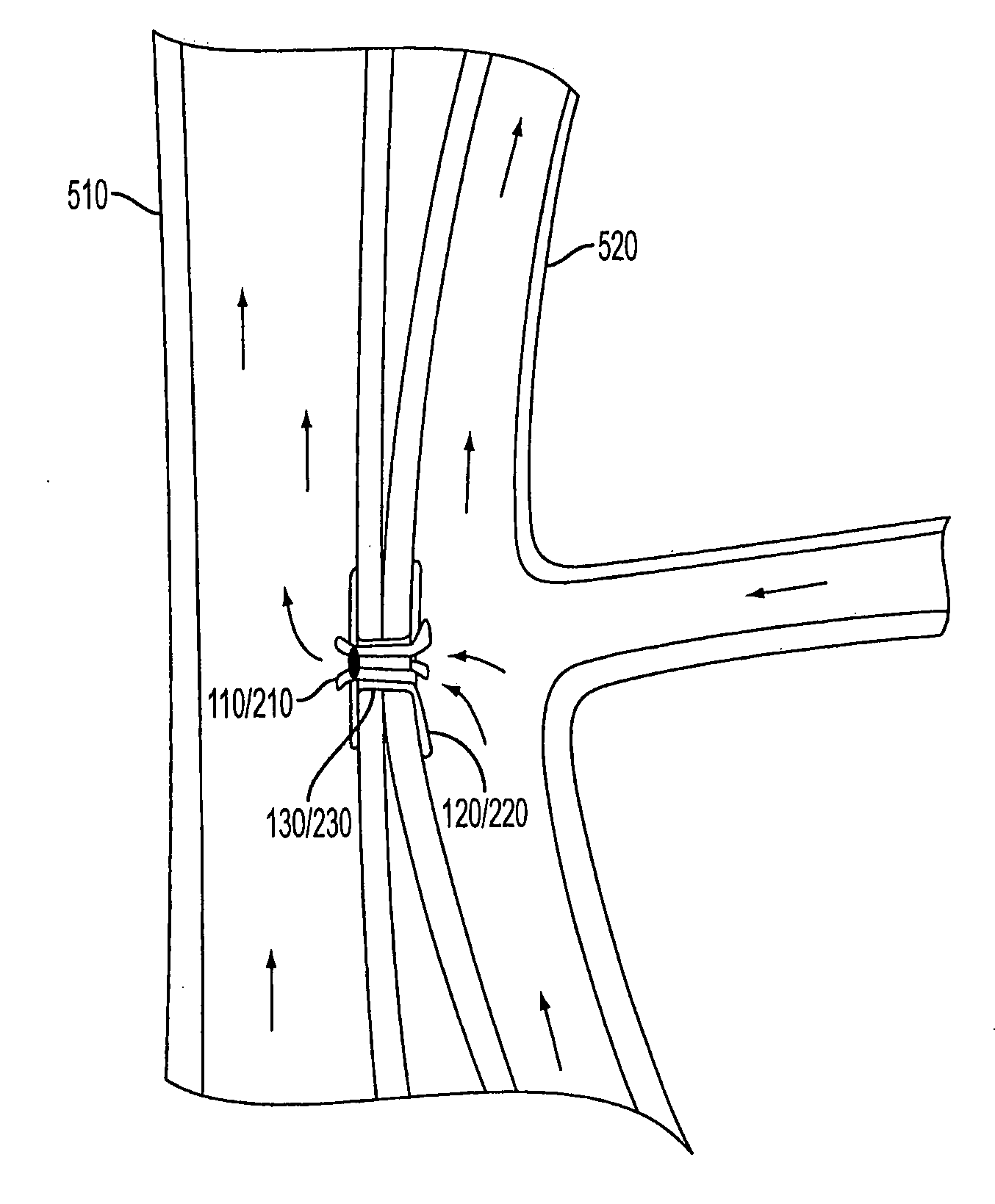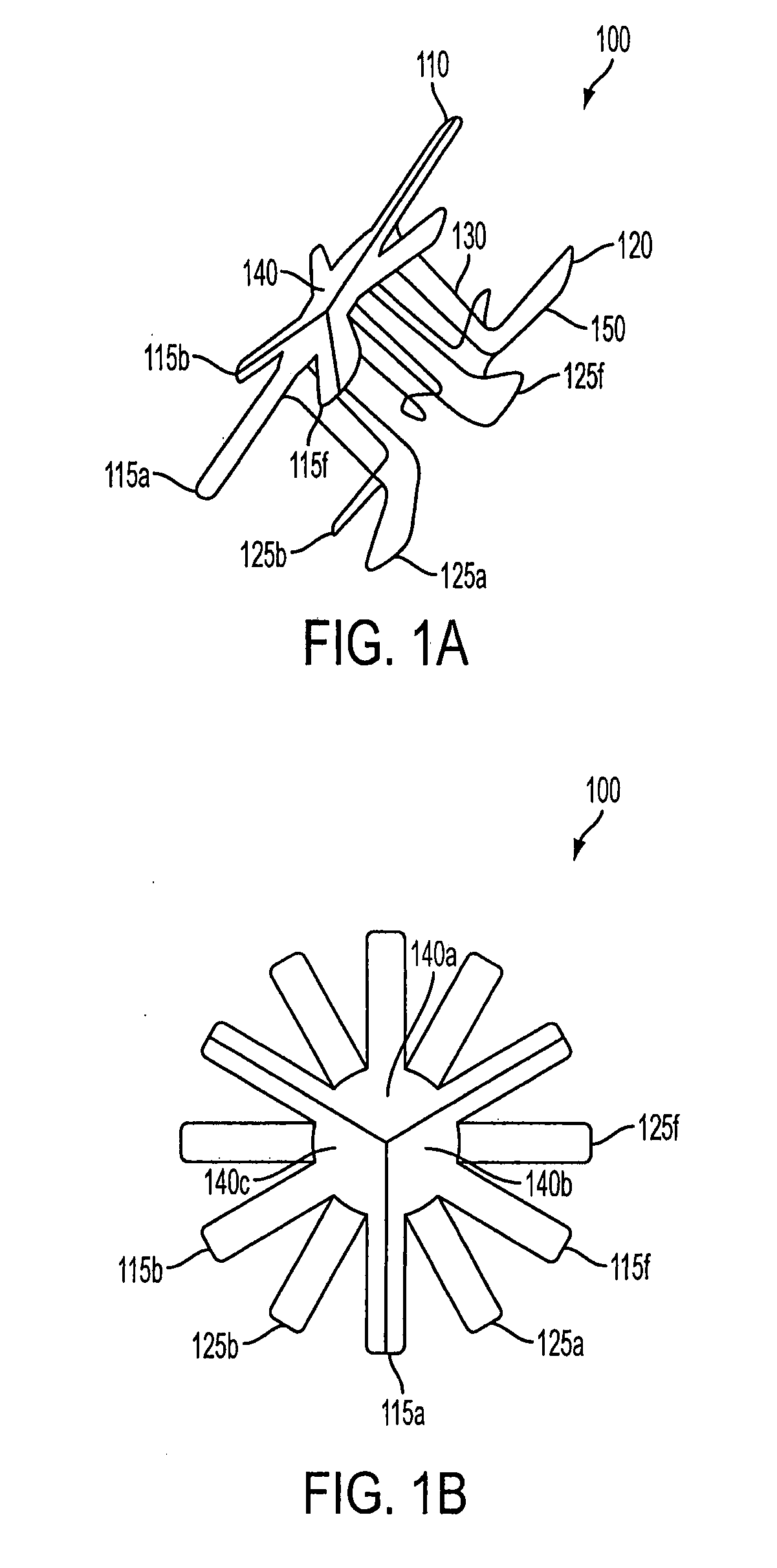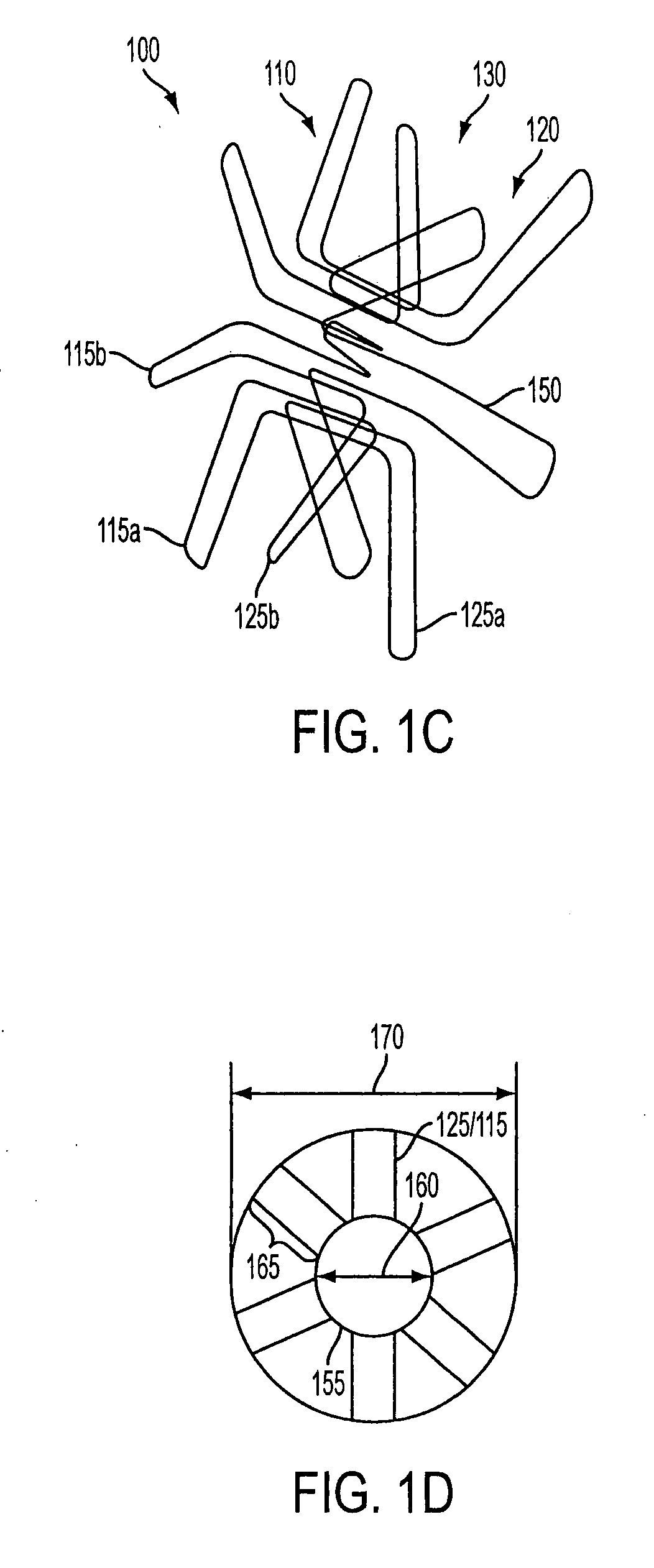Transcaval mesenteric venous anastomosis and access system
a transcaval mesenteric vein and access system technology, applied in the field of transcaval mesenteric vein anastomosis and access system, can solve the problems of fatal bleeding, increased blood pressure in the portal system, abdominal swelling, etc., and achieve the effect of safe and effective treatment of portal hypertension
- Summary
- Abstract
- Description
- Claims
- Application Information
AI Technical Summary
Benefits of technology
Problems solved by technology
Method used
Image
Examples
first embodiment
[0035]FIG. 1A illustrates an anastomosis device 100 according to the present invention. Anastmosis device 100 includes a proximal flange part 110, a distal flange part 120, and a flow lumen part 130 between proximal flange part 110 and distal flange part 120. Proximal flange part 110 has a plurality of proximal radial struts 115a-f, and distal flange part 120 has a plurality of distal radial struts 125a-f. Disposed on the plurality of proximal radial struts 115a-f is a valve part 140, which may include a plurality of leaflet parts 140a-c.
[0036]Proximal flange part 110 and distal flange part 120 are used to hold the vascular lumens apposed to each other, as illustrated in greater detail below. Flow lumen part 130 provides a flow conduit for blood (or other fluids) and provides a path for a surgeon to advance an interventional diagnostic or therapeutic device.
[0037]Proximal radial struts 115a-f define an aperture (not shown) in a center portion of proximal flange part 110. Distal rad...
second embodiment
[0047]FIGS. 2A and 2B illustrate an exemplary anastomosis device 200 according to the present invention. Exemplary anastomosis device 200 may be substantially similar to anastomosis device 100, but with a different valve part 240. Anastomosis device 200 may also have a plurality of capacitors (not shown) substantially similar to capacitors 180 of anastomosis device 100. Valve part 240 includes a spiral configuration of wire, such as Nitinol. More specifically, valve part 240 may have a superelastic coil that forms a seal. Valve part 240 is preferably disposed on the proximal flange part 210, the distal flange part 220, or both, as explained above.
[0048]If valve part 240 is disposed on proximal flange part 210, the proximal radial struts 215a-f may have a covering substantially similar to leaflets 140a-c of the first embodiment. The covering is to prevent leakage around valve part 240. Similarly, if valve part 240 is disposed on distal flange part 220, then distal radial struts 225a-...
PUM
 Login to View More
Login to View More Abstract
Description
Claims
Application Information
 Login to View More
Login to View More - R&D
- Intellectual Property
- Life Sciences
- Materials
- Tech Scout
- Unparalleled Data Quality
- Higher Quality Content
- 60% Fewer Hallucinations
Browse by: Latest US Patents, China's latest patents, Technical Efficacy Thesaurus, Application Domain, Technology Topic, Popular Technical Reports.
© 2025 PatSnap. All rights reserved.Legal|Privacy policy|Modern Slavery Act Transparency Statement|Sitemap|About US| Contact US: help@patsnap.com



